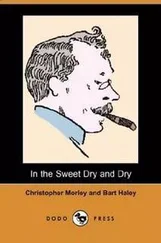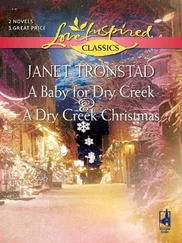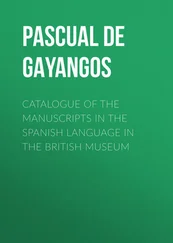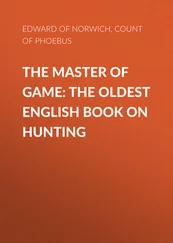I do not think, however, that this re-interpretation of the well-established term “glosses” is helpful from the point of view of glossography and I can only agree with Korhammer (1980: 22), who rejects the use of the term “glosses” in connection with construe marks.construe marks By broadening the definition of the term “gloss” to include non-linguistic additions, we lose an effective means of referring to the different types of additions in medieval MSS, such as marks (i.e. syntactic marks, compilation marks, individual marks of unclear functional status etc.), doodles, names, pen trials, scholia, glosses etc. There is no apparent need to re-interpret the term “glosses” to include all of them, as they are functionally and formally so different that the only property that they share is the fact that they were added later. Hence, “additions” is a more appropriate umbrella term if we want to refer to them all at once.
Among the additions that are themselves made up of linguistic material, glosses are functionally distinguished by representing an explanatory comment on the L. base text. Names, pen trials and compilation marks are not considered in the Catalogue given below: Names may have been meant as owner’s marks or as mere commemorative inscriptions featuring the writer’s or somebody else’s name; “pen trials” (or L. probationes pennae ) is a somewhat misleading umbrella term for additional entries that cannot directly be connected to the base text; and compilation marks were added by the scribes during the preparation of the MS. They do all constitute important and interesting evidence for a MS’s history and may provide highly relevant data for onomastic, literary, historical, palaeographical or codicological studies, but their contributions to medieval MSS typically fulfil an arguably different role than glosses.
2.1.2 Types of Old English Glosses
OE glosses are known to us from more than 200 MSS and they are extant in three different settings, which have often been understood as stages in the accumulation of glossographic knowledge during the Middle Ages (cf. Gretsch 1999b: 209–210).
The first of these settings is the so-called occasional glossing. Occasional glossesglossesoccasional are individual OE interpretamenta added (sometimes seemingly randomly) to L. lemmata in a coherent L. text.1 The density of occasional glossing can vary quite considerably in between MSS: Some MSS were furnished with several thousand OE and L. glosses; from others we only know of a handful of OE glosses. Unfortunately, we cannot generalize about the scriptorial context in which such occasional glosses were added to MSS, as we know rather little about this process. For some occasional glosses, we can assume that they were added spontaneously by a reader who tried to overcome a certain linguistic difficulty in the L. text. Perhaps that reader, let us assume he was a monk for the moment as this seems to be the most likely setting,2 could ask a teacher or a fellow monk about the meaning of a particular word or phrase and after receiving that necessary piece of information decided to add it to the MS, perhaps as an aide-mémoire for himself or for the benefit of subsequent readers.
Some rare examples of such a process can be gleaned from the Leiden family of glossariesLeiden family of glossaries. The glossary preserved in St. Gallen, Stiftsbibliothek 913St. Gallen, StiftsbibliothekMS 913 [K:A29], p. 143, for instance, reads: “laru m hragra adrianus d ici t meum e ss e”, which might be translated as: ‘ larum [that is in OE] a heron; Hadrian says it is a seagull’. Bischoff & Lapidge (1994: 288) demonstrate convincingly that this reference can only be to Bishop Hadrian,Hadrian of Canterbury who taught in CanterburyCanterbury around AD 700. He hailed from North Africa and was more closely familiar with the Mediterranean fauna as described in Leviticus 11:16, where this particular piece of L. vocabulary occurs. It may be inferred that Hadrian passed his first-hand knowledge of what L. larus exactly referred to on to his pupils in Canterbury. One of them perhaps noted this down, most likely directly into a copy of the Bible from where it was later culled and incorporated into the Leiden family of glossaries.
For other occasional glosses, however, it can be shown that they were copied wholesale from other MS witnesses of the same text. A well-studied group of MSS where this can be demonstrated is the so-called “Digby Group” (cf. Gwara 1998b)Digby Group. Occasional glosses in a MS, therefore, do not necessarily represent the spontaneous interaction of a reader with the text.
A second setting for OE glosses can be seen as an intensification of occasional glossing. In some MSS, glossing was undertaken more consistently, so that for some passages or even for most parts of the MS every or nearly every L. word was supplied with an interlinear translation. These so-called continuous interlinear glossesglossescontinuosglossesinterlinear formed a kind of text themselves, which was, however, heavily influenced by the original L. syntax. Continuous interlinear glosses are especially frequently found in psalters (cf. Pulsiano 2001), but they are also known from other texts, such as BOETHIUS, De consolatione philosophiae or BENEDICT’s Regula BoethiusDe consolatione philosophiaeBenedict of NursiaRegula. So far, no dry-point glosses have been discovered in the context of continuous glosses. It may well be that dry-point writing was never used for this purpose.3
A third setting, the glossary,glossaries represents the abstraction of the occasional or continuous OE glosses from the context of the original L. text. The “Épinal Glossary”,Épinal, Bibliothèque municipale 72 which is dated to AD 700 (cf. Bischoff et al. 1988: 13), shows that from an early date both L. and vernacular glosses were culled from occasionally or continuously glossed Anglo-Saxon MSS and compiled in lists of lemma/interpretamentum pairs. These glossaries must have been reworked repeatedly, presumably to improve their usability as reference books (cf. Lendinara 1999b: 207). In some glossaries, we can still see the original order in which they were culled from the base text, forming so-called “batches”. In others, so-called “alphabetical glossaries”, the lemmata are sorted according to their first letter or first few letters, which probably indicates that an existing glossary was reworked by culling in succession all glosses whose first letters matched the right combination.4 In a third group of glossaries, the so-called “class glossaries”, the lemmata from a semantic field were arranged as groups of glosses. This may have been useful for teaching purposes. Class glossaries do not seem particularly apt to serve as reference books, because the reader would have to know the word field of a particular word before he would be able to look it up in a class glossary.
No OE dry-point glosses have been discovered in the context of glossaries. There is some evidence from OHG glossography, though, that dry-point glosses were added as occasional supplements to existing glossaries in rare instances. Therefore glossaries should not be ruled out categorically as candidates for further dry-point finds, but there is no evidence at the moment that the use of dry-point writing was customary in Anglo-Saxon glossaries.
2.1.3 The Form of Occasional Glosses in Anglo-Saxon Manuscripts
In casual usage, the term “gloss” often only refers to the added L. or vernacular element itself. Typically, however, a gloss consists of two constituting elements: Firstly, the added piece of information itself, which is referred to as the interpretamentum interpretamentum, and secondly, the word or phrase of the L. text that is being commented on or translated by the interpretamentum, the so-called lemma lemma. Both the interpretamentum and the lemma may consist of a single word form or a short phrase. Inked interpretamenta are often easily spotted, as they are usually placed above the line of the base text as an interlinear glossglossesinterlinear or outside the text block in the margins of the MS page as a marginal gloss. The identification of the corresponding lemma, on the other hand, is not always straightforward: If the interpretamentum is added interlinearly, it is usually placed right above its lemma. However, if the interpretamentum is added marginally,glossesmarginal the connection between the interpretamentum in the margin and the lemma in the text block is not always directly indicated by the physical proximity on the MS page. While marginal interpretamenta added to the inner or outer margin of the MS are often added at about the same height on the page as the line in which the lemma is to be found, interpretamenta placed in the top or bottom margin do not offer similar clues. It is sometimes possible to guess the corresponding lemma on account of semantic considerations (especially if the gloss represents a synonymous lexical gloss), but this is not directly possible if the attribution to several lemmata on the same page would make equal sense.
Читать дальше












